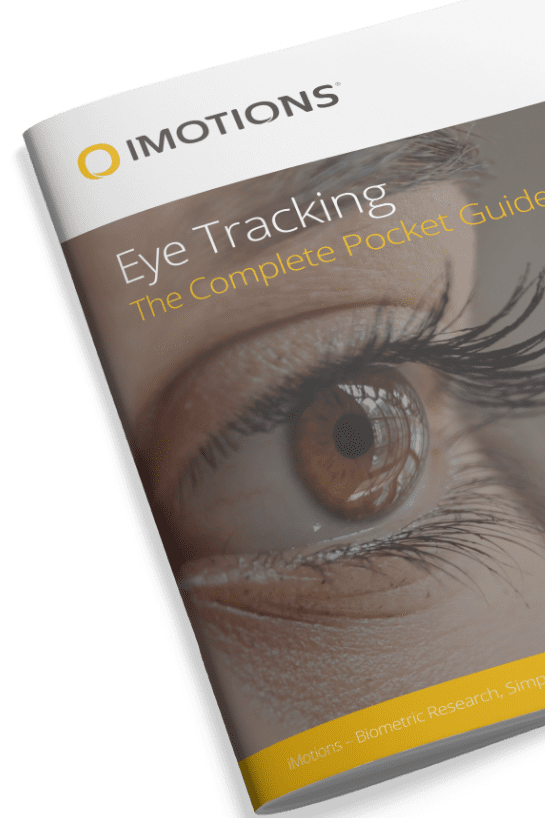Discover fascinating neuromarketing examples that reveal how brands use neuroscience to understand consumer behavior, improve campaigns, and boost engagement.
Table of Contents
- 1. How Gaze Shapes Attention: Insights for Effective Advertising Through Eye Tracking
- 2. How Neuromarketing Revolutionizes Packaging Design for Maximum Appeal
- 3. How Color Influences Emotions and Drives Consumer Behavior
- 4. Boosting Ad Efficiency with fMRI: A Game-Changer in Neuromarketing
- 5. Overcoming Decision Paralysis: Why Less is More for Consumers
- 6. Evaluating Consumer Satisfaction with EEG: Insights for Better Advertising
- 7. Leveraging Loss Aversion: How Fear of Missing Out Drives Consumer Behavior
- 8. Anchoring in Neuromarketing: Influencing Decisions Through First Impressions
- 9. The Need for Speed: How Efficiency Outranks Security in Consumer Preferences
- 10. Revealing Hidden Responses: How Neuromarketing Uncovers True Consumer Preferences
- 11. Reward and Punishment: The Psychology Behind Consumer Engagement
- 12. Prototype Testing with Neuromarketing: Designing Products That Drive Sales
- 13. Setting the Right Price: How Neuromarketing Can Optimize Pricing Strategies
- 14. Website Layout Optimization: How Neuromarketing Enhances User Engagement
- 15. Memorable Headlines: How Neuromarketing Captures Attention and Boosts Impact
- Eye Tracking
Neuromarketing is taking the world by storm and has been utilized by almost every major company and university in some way or form. Despite such a widespread influence on the marketing world, many people do not know exactly what neuromarketing is, or how it can be used effectively. The following articles outline 15 fascinating examples of neuromarketing in action.
1. How Gaze Shapes Attention: Insights for Effective Advertising Through Eye Tracking
It is old news that ads that include people are much more effective than those that do not. In particular, images and videos that include babies tend to attract longer and more focused attention from potential customers. Advertisers have long attempted to boost sales for baby products using close ups of adorable baby faces – with the help of eye tracking technology they have identified that this alone is not enough.

Researchers discovered that when the infant looks face on, viewers will be far more focused on the baby’s face to the detriment of focusing on the ad content. However, if the infant is directing its gaze at the product or text then the viewer will in fact focus on the advertising content.
Takeaway: As a result of such findings advertisers have now taken on board that although baby faces are popular among consumers, they also make sure that the baby is looking at what they want the consumer to buy. Read more about the study here.
2. How Neuromarketing Revolutionizes Packaging Design for Maximum Appeal
We all know the feeling of being drawn to particularly striking or attractive packaging. Advertisers have always known that it’s not always what’s inside that counts, but neuroimaging has managed to take this to a whole new level. Brands such as Campbell’s and Frito-Lay have used neuroimaging to reimagine their packaging. In studies, customers were shown packaging with their responses recorded as positive, negative or neutral. In addition, they were interviewed extensively in relation to color, text and imagery.

This research revealed that customers had a negative response to shiny packaging, but didn’t show a negative response to packaging when it was matte. Frito-Lay then went on to scrap the shiny packaging, and move on with the new, matte look.
Takeaway: Neuromarketing techniques are being employed extensively to redesign packaging and presentation. To read more about the study above (and some other interesting studies) check out this link.
3. How Color Influences Emotions and Drives Consumer Behavior
When selecting colors, bear in mind that you may be influencing how potential customers feel. Colors can evoke a wide range of emotions, with studies consistently showing a link between certain colors and certain emotions.

Utilizing a color effectively can be a powerful marketing tool. One of the most infamous examples is Coca Cola’s ubiquitous use of the color red, but there are many more companies who have also used color to great effect. Neuromarketing experts specializing in color and advertising have divided colors into subgroups as a guide to how they may be used effectively. Cool blues, for example, are the go-to color if you wish to attract professionals.
Takeaway: Make sure to familiarize yourself with how color may be used to influence purchasing behavior.
Let’s talk!
Schedule a free demo or get a quote to discover how our software and hardware solutions can support your research.
4. Boosting Ad Efficiency with fMRI: A Game-Changer in Neuromarketing
For many years brain imaging was purely the reserve of the academic or the scientific. Neuromarketing, however, has tapped into the incredible potential of fMRI imaging to grant us insights into human behavior and consumer habits.

One example of how neuromarketing has made use of fMRI is to compare advertising campaigns before releasing them to the general public. In one particular study, three different ads for the National Cancer Institute’s telephone hotline were viewed by participants. The ad campaign that elicited the highest amount of brain activity in a particular region, led to significantly higher calls to the hotline. This novel approach is a new avenue for identifying ad campaigns that will genuinely engage the public.
Takeaway: fMRI has incredible potential for enhancing marketing strategies, increasing engagement and action.
5. Overcoming Decision Paralysis: Why Less is More for Consumers
Sometimes, consumer behavior research goes against what we may have previously believed. A study by Columbia University revealed that too many choices may actually be a deterrent for potential customers. Using different types of setups, they found that displays containing a wide array of options were less likely to get customers to stop.

Takeaway: Less is more and sometimes customers can be overwhelmed by too many choices. Interested in learning more about decision paralysis and what to do about it? Take a look at this great article.
6. Evaluating Consumer Satisfaction with EEG: Insights for Better Advertising
Emotion Response Analysis (ERA) uses EEG imaging to identify the emotional response an individual has to a product, advertisement etc.

Our level of engagement or emotional arousal in relation to a product is invaluable to the advertiser. If, for example, the consumer experiences high levels of frustration in response to your product then there is evidently an issue with usability you may wish to address. EEG may be used to evaluate consumer satisfaction. In one study EEG was used to evaluate satisfaction with a dermatological treatment. They found that customer satisfaction correlated with activation in the neural circuits involved in evaluating facial beauty.
Takeaway: Like fMRI, EEG can shed light on the most effective ways of advertising (amongst other uses). If you’re interested in how EEG can be used in conjunction with iMotions software then check out this link.
7. Leveraging Loss Aversion: How Fear of Missing Out Drives Consumer Behavior
One interesting finding utilized by neuromarketing is that people really don’t want to lose out. People are just as worried about what they might lose as what they might gain. For this reason “buy before it’s gone” strategies are highly effective.
When the alternative option is posed as a loss, consumers are much more likely to buy. For this reason, a concept called “framing” is highly important in neuromarketing. This technique is how advertisers present decisions to consumers in a way that makes them more likely to splash the cash.

Takeaway: Consumers hate to feel they are missing out on a bargain, so make sure to emphasize if they are set to lose out.
8. Anchoring in Neuromarketing: Influencing Decisions Through First Impressions
The first piece of information your customer receives is highly important. It can be the basis for any subsequent decision-making and set the tone for their purchasing behavior. Neuroscientists have discovered a flaw in the workings of the mind, and how it reaches decisions. As individuals, we are rarely able to evaluate the value of something based on its intrinsic worth, but instead compare it with the surrounding options.

A valuable application of neuromarketing therefore, is to take advantage of this “anchoring effect”. If for example, you are looking at two hotel rooms which are priced similarly but one offers a free coffee in the morning, you are much more likely to go with the free coffee. You will more than likely not explore the quality of the rooms offered or any detailed features.
Advertisers often take advantage of this when comparing bundle packages or deals against each other. In this way, we may often find ourselves signing up to contracts or a year-long commitment.
Takeaway: Anchoring can help you swing the deal the right way. This interesting piece highlights how anchoring methods can work for businesses.
9. The Need for Speed: How Efficiency Outranks Security in Consumer Preferences
Neuromarketing is useful for detecting customer trends. Whilst companies often seek to portray a sense of safety and security, speed and efficiency may be what customers are after. PayPal discovered this by conducting a study which found that the promise of convenience activated the brain more than security. They used this information to convert more shoppers to their online payment service by emphasizing their speedy payment system.
Takeaway: Whilst it may seem like emphasizing the safety and security of a product will win customers over, you may instead want to get the message across that your product is fast and efficient.

10. Revealing Hidden Responses: How Neuromarketing Uncovers True Consumer Preferences
When testing a new advertisement, Cheetos used focus groups and EEG to evaluate consumer response.
In this particular ad, a woman played a prank on her friend by filling her white load of laundry with orange Cheetos. Focus Groups reported a dislike for the ad, however when an EEG study was ran with the same participants it revealed that they really liked it. Participants in the focus group were afraid to voice the fact they found the ad humorous in case other members thought they were unkind. In this manner, neuromarketing can reveal hidden thoughts and preferences.

Takeaway: Neuromarketing techniques can reveal hidden responses. To read about another interesting technique capable of illuminating our thought processes check out the IAT.
11. Reward and Punishment: The Psychology Behind Consumer Engagement
Even video game design has started to use psychological principles in the product design process, specifically using reward and punishment in order to make engaging games, and to keep people playing them. By increasing the reward presented by the game, the action may also increase the levels of dopamine (a neurotransmitter) within the brain. This neurotransmitter is associated with pleasure and positive associations, which can increase the attachment to keep playing.

Game designers are now even hiring psychologists to help with game design, building psychological principles directly into the game mechanics.
Takeaway: Create a pleasurable experience for consumers to keep them attached, and coming back, to the product.
12. Prototype Testing with Neuromarketing: Designing Products That Drive Sales
Whilst advertisements are obviously vital to influencing consumer behavior, the design of products themselves can also be instrumental.

In a famous neuromarketing case, Hyundai used EEG to test their prototypes. They measured brain activity in response to different design features, and explored which kind of stimulation was most likely to result in buying.
The findings of this study led Hyundai to change the exterior design of the cars themselves.
Takeaway: The growth of neuromarketing has the capability to transform the world we live in.
13. Setting the Right Price: How Neuromarketing Can Optimize Pricing Strategies
How to price products in a way that tempts consumers is a long-running and contentious question. We are all aware that pricing something at $9.99 instead of $10 is an advertising tactic, but does it work?
An array of new findings are shedding light on this age-old question. This fascinating new piece of information being used by neuromarketers, is that rounded figures are more likely to work alongside emotional decision-making, whilst more complex figures work better when the logical brain is engaged. This is because complex numbers make the brain work harder, perhaps convincing it that the complexly priced product is the more logical decision.
Takeaway: Take the neuromarketing approach to set your price.

14. Website Layout Optimization: How Neuromarketing Enhances User Engagement
Neuromarketing techniques are also being employed to inform how websites are designed.
From color schemes, layouts, font size and beyond, neuromarketers are delving into our website preferences. There are now some firm rules of thumb when it comes to creating websites. For example, using certifications, testimonials and social widgets are sure to draw customers in more than those that don’t.

Another interesting finding is that newer, horizontal style website layouts are less effective than traditionally vertical. This is because reading webpages from the top down engages the brain, and makes viewers more likely to keep on scrolling.
Takeaway: Use science to inform your website design. For 15 additional ways to engage web traffic take a look at this link.
15. Memorable Headlines: How Neuromarketing Captures Attention and Boosts Impact
Headlines are one of the first things the viewer sees so obviously they need to stand out and be noticed.
As a result, they have been heavily researched, with a new neuromarketing technique called “Hippocampal Headlines” being coined. What does this mean? Researchers at University College London found that when a familiar phrase is slightly altered, our hippocampus is activated, and our attention is piqued. Many bloggers have used the example of Patron and their marketing slogan “Practice makes Patron” as an example of this.

Takeaway: If you surprise the brain your advertising campaign will be much more effective.
We hope you have enjoyed these examples. If you want to learn more about neuromarketing and to see how iMotions can elevate your neuromarketing research, please feel free to get in touch or download our guide below to see how eye tracking can help you uncover valuable insights.
For further reading Check out: 5 Marketing Myths Disproved by Neuromarketing
Eye Tracking
The Complete Pocket Guide
- 32 pages of comprehensive eye tracking material
- Valuable eye tracking research insights (with examples)
- Learn how to take your research to the next level












